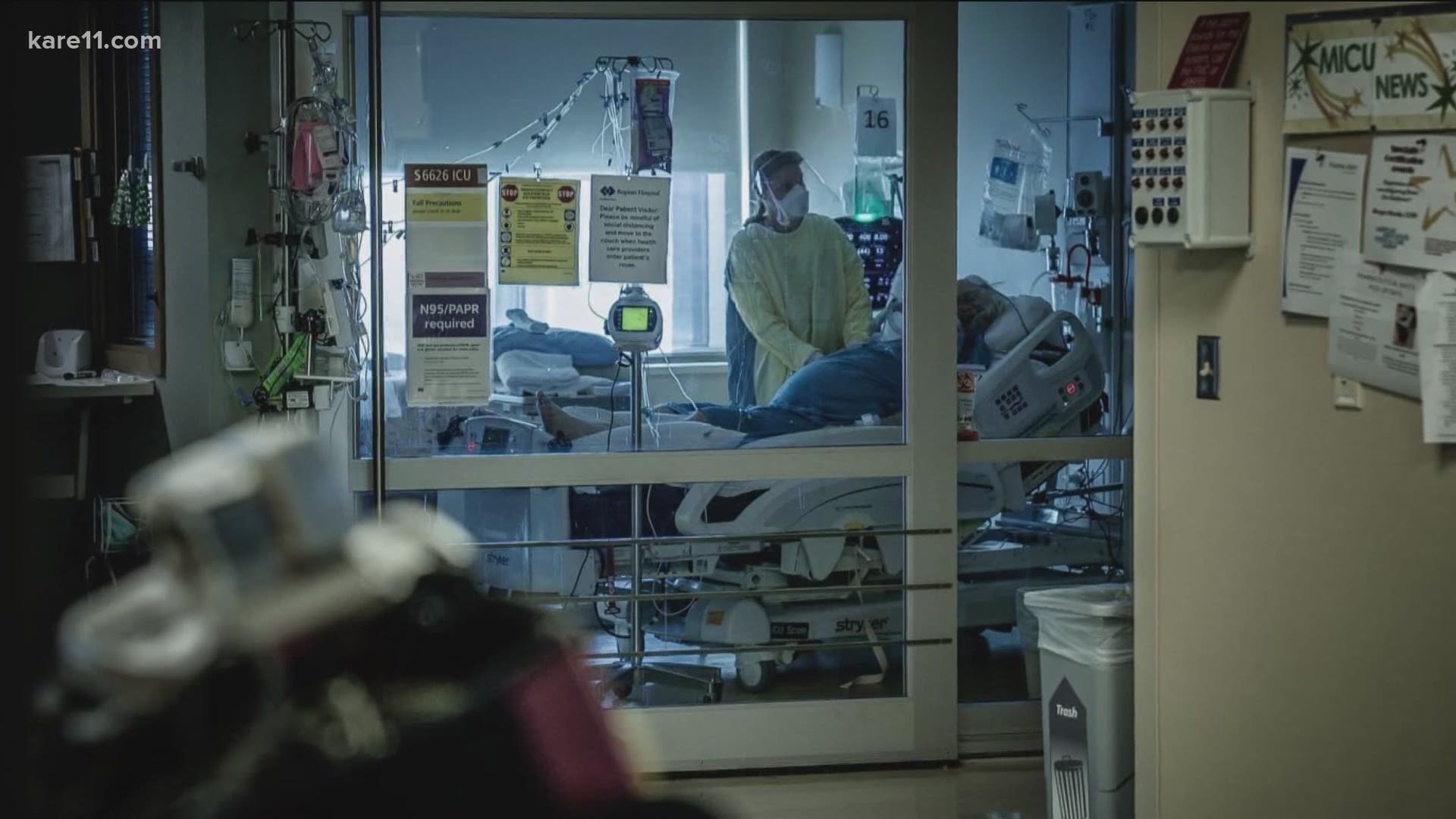ST PAUL, Minn. — After bottoming out in March, COVID hospitalizations are on the rise again in Minnesota. And the average age of those patients is getting younger.
According to data assembled by the Minnesota Department of Health, the average age of COVID patients in this state is now 59, compared to 69 during the second wave surge in November and December.
"We were seeing elderly before, and now we're seeing people our age -- the age of our physicians -- in the hospital, and younger people too definitely," Dr. Natalia Dorf-Biderman of Methodist Hospital told KARE Thursday.
"We’re seeing this striking weakness, fatigue, profound malaise in younger people, sometimes this kind of foggy sense of thinking," Dr. Dorf-Biderman explained.
The statistic that is particularly alarming in the MDH is a rise in infections among youth, and rising hospitalizations of children.
"A lot of people, including children under the age of 16 cannot yet be vaccinated, so it’s extra important that all of us who can vaccinated do so in order to reduce the risk to them," Minnesota Health Commissioner Jan Malcolm told reporters Thursday during a statewide conference call.
"Even a mildly ill or completely asymptomatic child can transmit the virus to more vulnerable people in their family and broader community."
In the same media briefing Commissioner Malcolm revealed that face masks will no longer be required for outdoor school sports, while still being recommended. They'll still be required on the sidelines and dugouts, and for indoor youth sports.
Student testing expanded
It's why the MDH and Minnesota Dept. of Education are recommending that middle and high school students be tested once every two weeks, and student athletes be tested weekly because of their close contact with students outside their bubble.
"These tests are going to be free for our students, for our schools and all of our sports teams," Education Commissioner Heath Mueller explained.
"The state of Minnesota will provide test kits and resources for any middle school, high school or organized sports team, and will offer testing for students and sports participants."
Mueller said students can take the saliva test kits home with them, and then return them to school so that the staff and send them to the lab. Students will only be tested with parental consent, and districts are free to craft their individual testing protocol.
"This is about local control, at the local district level. And how does the state provide the resources and support for local school districts," Assistant Health Commissioner Dan Huff remarked.
He said MDH will also work to establish links between schools and barrier-free community testing sites to expand the numbers of students being tested.
More testing will, by its very nature, lead to more positive tests. But analysis of those test results will help researchers detect outbreaks earlier and take steps to break the transmission chain.
"A common misperception is still with us, that even if kids do get sick it’s not that big of a deal because they don’t get very sick," Malcolm said. "In fact, some do get very sick."
Children's Hospital battle front
Dr. Brooke Moore, a pediatric pulmonologist at Children's Minnesota Hospital said Children's has admitted 11 children for COVID in the past week, and five of them are in the pediatric intensive care unit. Her hospital system has admitted 385 children since the pandemic began.
"Studies have shown most children with COVID-19 are asymptomatic or have mild to moderate symptoms. Approximately 10%, however, will develop severe disease."
Children's has treated 70 pediatric patients diagnosed with MISC -- Multi-system inflammatory syndrome in children, which has severe symptoms and can have long-term health effects.
"Rates of hospitalization in children, like adults, are increasing. It is clear that the COVID-19 pandemic is not over quite yet," Dr. Moore told reporters.
She noted that many children are less healthy than they were before the pandemic began because of lack of physical activity, social isolation and anxiety about the disease and its collateral impacts.
Dr. Moore said Minnesota as a state is behind 42,000 doses of normal childhood vaccinations because parents have been afraid that they'd be exposed to the virus if they entered medical settings.
"This means we are going to have to figure out how to live and raise our children when seemingly every action we take carries some risk."

